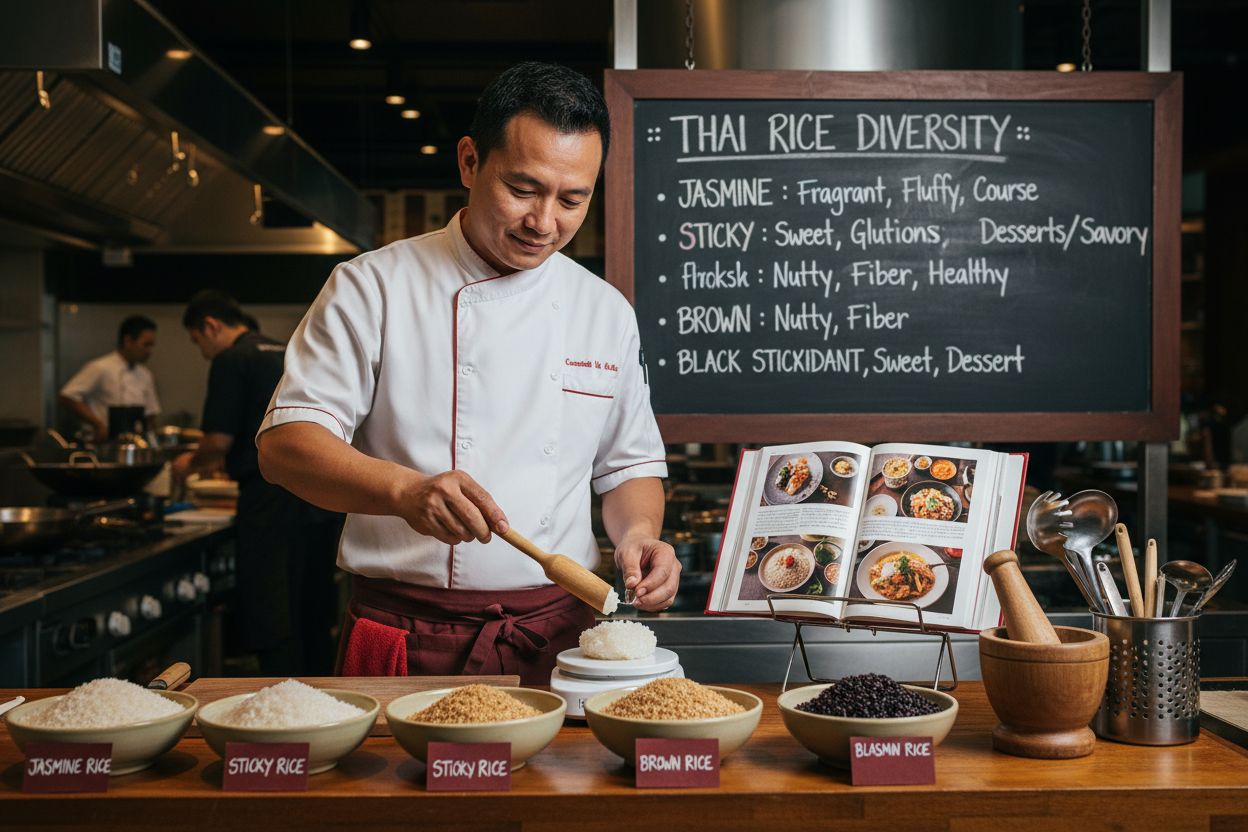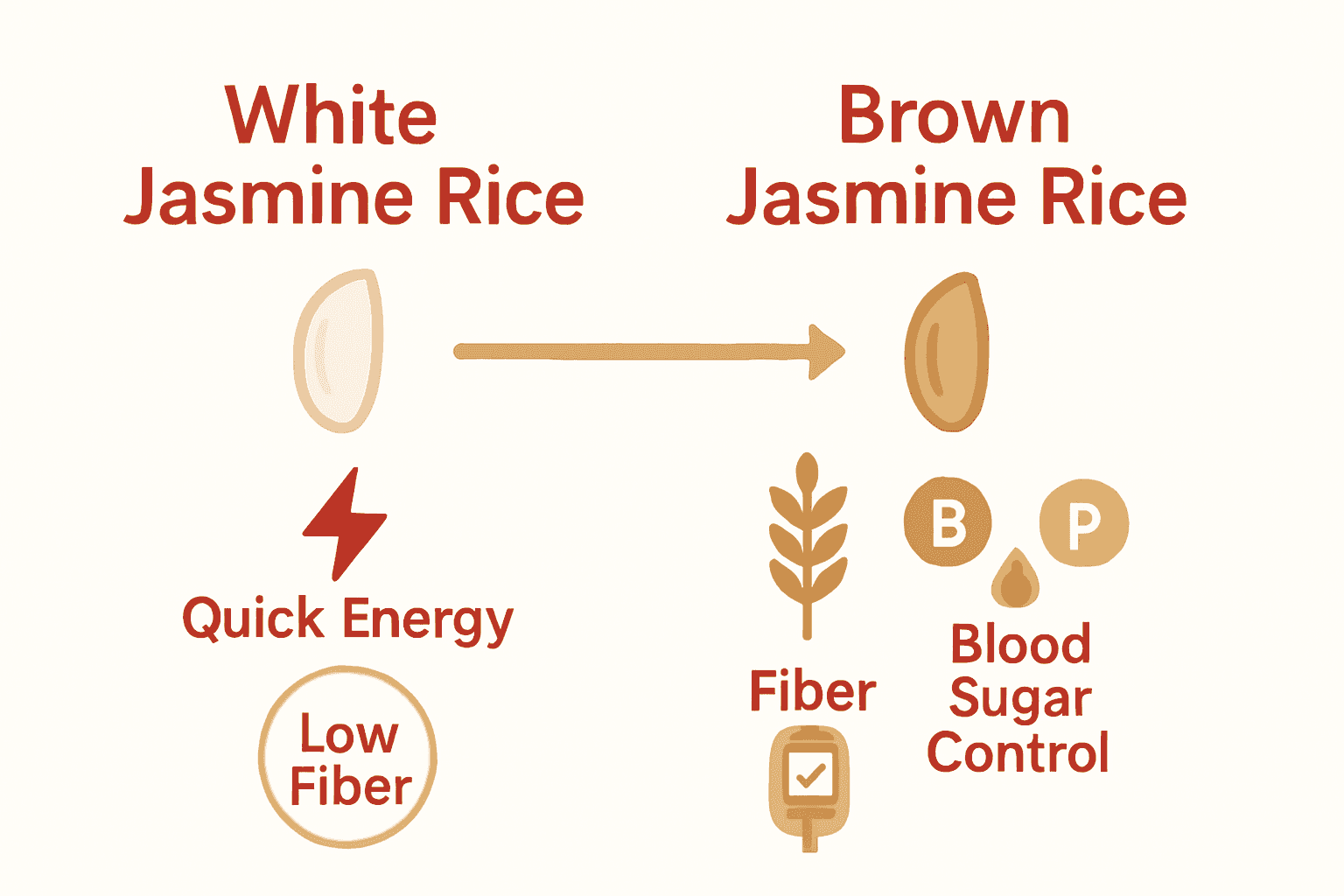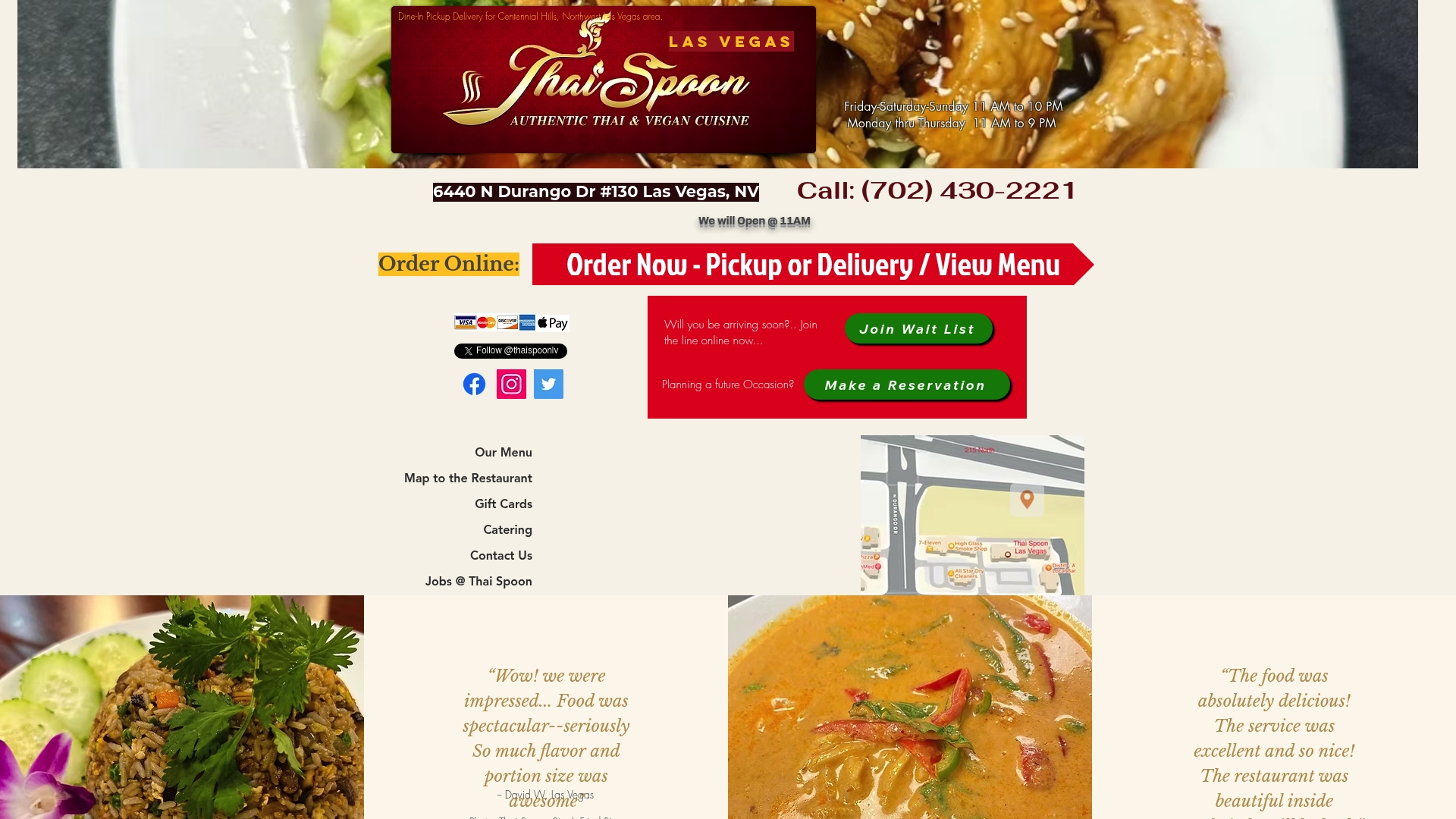Role of Rice in Thai Cuisine: Complete Guide
- mail469793
- Oct 18
- 6 min read

Did you know the word for rice and food is the same in Thai? This single grain shapes daily meals, traditions, and even greetings across Thailand. With tens of thousands of unique rice varieties grown over generations, rice stands at the center of both family tables and royal ceremonies. Discover how rice influences everything from local recipes to spiritual rituals, highlighting its powerful presence in the heart of Thai culture.
Key Takeaways
Point | Details |
Cultural Significance | Rice is central to Thai culture, symbolizing community, prosperity, and is integral in daily meals and rituals. |
Diversity of Varieties | Thailand boasts numerous rice types, each serving unique culinary roles, with Jasmine rice and Sticky rice standing out. |
Signature Dishes | Traditional rice-based dishes, such as Khao Pad and Mango Sticky Rice, highlight rice’s versatility in Thai cuisine. |
Nutritional Value | The type of rice impacts health; brown jasmine rice offers more fiber and nutrition compared to white variants, aiding in long-term wellness. |
Table of Contents
The Central Role of Rice in Thai Cooking
In Thai culture, rice isn’t just a food—it’s a way of life. According to research from traditional Thai cultural sources, the language itself reflects rice’s profound significance. In Thai, the word for rice (“khao”) is identical to the word for food, underscoring how deeply this grain is woven into the culinary and social fabric of the nation.
Historically, Thailand has been a treasure trove of rice diversity. Our guide on understanding rice in Thai meals reveals that tens of thousands of unique rice varieties have been cultivated over generations. This remarkable agricultural heritage demonstrates rice’s critical role beyond mere sustenance:
A symbol of community prosperity
Central to religious and cultural ceremonies
A fundamental component of daily nutrition
Even social interactions in Thailand revolve around rice. The traditional greeting “Have you eaten yet?” literally translates to an inquiry about rice consumption. This isn’t just a casual pleasantry—it’s a deep cultural expression of care, hospitality, and connection. From royal ceremonies like the Royal Ploughing Ceremony to everyday family meals, rice represents more than nutrition. It embodies shared experiences, agricultural traditions, and the collective spirit of Thai society.
Major Types of Rice Used in Thai Cuisine
Jasmine rice stands as the crown jewel of Thai rice varieties, renowned for its soft texture and captivating aroma. According to research, this fragrant long-grain rice originates directly from Thailand and has become a global favorite, widely exported to North America and Europe. Learn more about this unique grain in our detailed guide, which explores its culinary significance.
Thailand’s rice landscape is remarkably diverse, featuring several distinctive types that serve different culinary purposes:
Jasmine Rice: Soft and aromatic, perfect for curries and stir-fries
Sticky Rice (Glutinous Rice): Predominant in northern and northeastern Thai cuisine, ideal for accompanying meats and salads
Brown Rice: Growing in popularity among health-conscious diners
Black Sticky Rice: Primarily used in traditional desserts
Each rice variety brings its own unique character to Thai cooking. Sticky rice, for instance, plays a crucial role in regional dishes, while jasmine rice remains the most internationally recognized Thai rice. The careful selection of rice type can transform a simple meal into an extraordinary culinary experience, reflecting the nuanced and sophisticated approach of Thai cuisine to this fundamental ingredient.

Here’s a comparison of major Thai rice varieties and their primary uses:
Rice Variety | Texture & Aroma | Typical Uses |
Jasmine Rice | Soft, aromatic | Curries Stir-fries |
Sticky Rice | Chewy, gluey | Meats Salads Desserts |
Brown Rice | Nutty, firm | Health-focused meals |
Black Sticky Rice | Dense, slightly sweet | Traditional desserts |
Signature Thai Dishes Featuring Rice
Khao phat (Thai fried rice) stands as a quintessential rice dish that captures the vibrant essence of Thai cuisine. According to culinary research, this central Thai specialty is a masterful stir-fry typically prepared with meat, eggs, garlic, and onions, then served with an array of fresh garnishes like cucumber, lime, and spicy condiments that awaken the palate.
Thailand boasts an impressive array of signature rice-based dishes that showcase the grain’s incredible versatility:
Khao Pad: Classic Thai fried rice, a street food favorite
Khao Soi: Northern curry noodle soup featuring rice noodles
Mango Sticky Rice: An iconic dessert blending sweet sticky rice with ripe mangoes and creamy coconut milk
Khao Kluk Kapi: A complex fried rice prepared with shrimp paste and accompanied by multiple garnishes
Our guide to Thai fusion meals reveals how these traditional dishes continue to evolve, demonstrating rice’s incredible adaptability in Thai cooking. Each dish tells a story—of regional traditions, local ingredients, and generations of culinary expertise.
Whether it’s a street vendor’s quick stir-fry or an elaborate restaurant presentation, rice transforms from a simple staple into a canvas for extraordinary flavors and textures.
Regional Rice Practices and Traditions
Glutinous rice, known locally as khao niao, holds a special place in the culinary traditions of northern and northeastern Thailand. This unique rice variety isn’t just a food—it’s a cultural cornerstone. Discover more about the unique elements of Thai cuisine, which highlight how deeply rice is woven into regional identities.
The regional rice practices reveal fascinating variations across Thailand:
Northern Traditions: Sticky rice eaten by hand
Ceremonial Uses: Rice featured in religious and cultural events
Culinary Diversity: Used in both savory dishes and desserts
Royal Ceremonies: Rice plays a central role in agricultural rituals
One of the most significant cultural events is the Royal Ploughing Ceremony, which marks the beginning of the planting season. According to cultural research, this ceremony symbolizes more than agricultural practice—it represents the deep spiritual connection between Thai people and rice. From grilled meats to intricate desserts, from spiritual offerings to community gatherings, rice transcends its role as mere sustenance. It is a living symbol of Thai cultural identity, connecting generations through shared culinary and spiritual traditions that celebrate this extraordinary grain.
Nutritional Benefits and Dietary Options
Jasmine rice represents more than a delicious staple—it’s a nutritional powerhouse with diverse health implications. According to nutritional research, the type of jasmine rice you choose can significantly impact your dietary health. White jasmine rice provides quick energy, while brown jasmine rice offers a more comprehensive nutritional profile that supports long-term wellness.
The nutritional variations between rice types are quite remarkable:
White Jasmine Rice: Quick energy source, lower in fiber
Brown Jasmine Rice: Higher in fiber, vitamins, and minerals
Glycemic Control: Brown rice linked to better blood sugar management
Diabetes Risk: Potential reduction in type 2 diabetes risk
Our guide to unique Thai cuisine elements highlights the nuanced approach to nutrition. Notably, a large-scale study revealed that daily replacement of white rice with brown rice could lower type 2 diabetes risk by 16%. Brown jasmine rice retains its bran and germ, supplying essential phytonutrients, fiber, and minerals that support digestive health and metabolic function.

This makes it an excellent choice for health-conscious diners seeking to enjoy traditional flavors while supporting their nutritional goals.
Experience Thai Rice Traditions at Thai Spoon Las Vegas
You have just explored how rice shapes every meal, memory, and ritual in Thai culture. Yet finding authentic Thai rice dishes outside Thailand can be difficult. Many restaurants compromise on the quality or the variety of rice, and it is hard to experience the genuine taste and texture described in our complete guide. Thai Spoon Las Vegas bridges this gap by offering signature dishes like Steak Fried Rice, Mango Sticky Rice, and khao pad, ensuring every grain honors traditional Thai cooking.

Do not settle for imitation when you can savor real Thai flavors prepared with care. Our menu is packed with jasmine rice, sticky rice, and other classics highlighted in the article, featuring vegan and gluten-free options to meet your dietary needs. Whether you want to dine in, order online, or bring the food home, you can start your culinary journey right on our main site. Rediscover the role of rice in Thai cuisine now—order your favorite dish today and taste the difference at Thai Spoon Las Vegas.
Frequently Asked Questions
What types of rice are commonly used in Thai cuisine?
In Thai cuisine, major rice varieties include Jasmine rice, Sticky rice (Glutinous rice), Brown rice, and Black sticky rice. Each type serves different culinary purposes, with Jasmine rice being ideal for curries and stir-fries, while Sticky rice is prevalent in northern and northeastern dishes.
How is sticky rice used in traditional Thai dishes?
Sticky rice, known as khao niao, is typically eaten with hands and accompanies various meats, salads, and desserts. It holds cultural significance in northern and northeastern Thai culinary traditions, often featured in communal meals and ceremonies.
What are some signature Thai dishes that feature rice?
Signature Thai dishes featuring rice include Khao Pad (Thai fried rice), Khao Soi (Northern curry noodle soup), Mango Sticky Rice (a dessert), and Khao Kluk Kapi (fried rice with shrimp paste). Each dish highlights rice’s versatility within Thai cuisine.
What are the nutritional differences between white and brown jasmine rice?
White jasmine rice is a quick energy source but lower in fiber, while brown jasmine rice is higher in fiber, vitamins, and minerals. Brown rice also supports better blood sugar management and may lower the risk of type 2 diabetes, making it a healthier choice overall.
Recommended











Comments